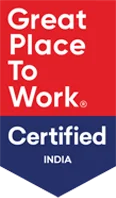Success Story
Team Augmentation Partner for India’s Largest Loan and Credit Cards Marketplace
Services Used:
The client is India’s largest loan and credit card marketplace with a customer base of 20+ million. With over 50+ partners across the lending ecosystem and a technology-driven platform, the marketplace enables the consumers to choose the best and most-suited lending platform.
- 10+ augmented team members
- 2+ years of engagement
- 20+ new features & updates launched
Business Situation
The lending services account for 95% of the business for the client. In order to make improvements to their digital system and introduce UI dynamicity, the client was on the lookout for varied technology resources to augment their existing development team. Considering the criticality of the business cycle, it was important to have senior-level resources onboard.
The lending marketplace selected Daffodil as their team augmentation partner where dedicated resources for different technologies worked to improve the mobile application. After a series of interviews to test technical capability, resources for ReactJS, React Native, NodeJS, and PHP were aligned to collaborate with the lending marketplace team. The key requirements were to:
- Act as a technology arm for the client and help them bring innovative features to the application through conceptualisation, UI/UX, development, QA.
- Implement a series of major UI enhancements and improve the search results to ensure a seamless customer experience.
- To improve speed and performance of the application by making the core architecture more robust and scalable.
- Help support the product evolution, quality assurance and maintenance tasks.
The Solution
Team Daffodil performed an application analysis to understand the performance gaps and how they can be improved. For this, it coordinated with the in-house team of the client for the technical and functional requirements for development.
While working with Daffodil, the loan and credit card marketplace had the advantage of augmenting their team size with more tech resources (at any point in time). A scrum, on daily basis, was aligned to ensure that the requirements, stage of development, and application performance is communicated between both ends.
To work on the speed of the application pages, certain capabilities were introduced to perform backend abilities on the frontend. For example, workflows for different modules were created that helped to create dynamic fields. Such practices not only help to improve the speed of the workflow cycle but also help in code maintainability.

For the document collection system, which was affected by the pandemic, a JSON-based dynamic UI creation was done. The entire UI was maintained through a JSON file that takes care of the document format, size, or which document should be followed by an upload.
Similarly, for the credit card module, team Daffodil helped to revamp the journeys with the bank. For this, page-level frontend optimization was done. The ReactJS developers managed a JSON file for every bank, ensuring that an automated workflow is created to complete the consumer-bank journey to a credit card.

For digital lending services, team Daffodil worked on improving the scalability of the module. The lending services module was built on microservices architecture. For every partner, a design pattern was created to ensure that for modifying or scaling a partner service, the work doesn’t need to be done from scratch. Since every service used APIs, different folders with naming conventions were created and APIs were stored on it. That way, a standard pattern was followed by every partner, which encouraged code reusability and readability.

Moreover, resources were aligned to work on the Android and iOS app home page. Which products should be showcased, what offers should be visible to the consumer (based on their credit score), and how a customer’s credit score can be improved (credit assist). For this, Native application languages (Objective C, Swift, Kotlin, Java) and React Native were used in the apps.
Likewise, continuous updations are brought to different modules within the digital platform for improved performance of the application. For all the modules, the updations were made to manage the frontend, without having to make changes in the codebase. This accelerated the speed and frequency to launch the revised edition of the app into the market.

The Impact
The client is convinced with the output (speed and other performance improvements) that dynamicity has introduced at the UI level. The team experiences ease in manageability of code as the backend remained untouched for bringing any dynamic changes at the UI level. The engagement has now spanned more than 2 years and both the teams have integrated well with each other.
Read Related Case Studies
Get in Touch
Sign up for a 30 min no-obligation strategic session with us
Let us understand your business objectives, set up initial milestones, and plan your software project.
At the end of this 30 min session, walk out with:
- Validation of your project idea/ scope of your project
- Actionable insights on which technology would suit your requirements
- Industry specific best practices that can be applied to your project
- Implementation and engagement plan of action
- Ballpark estimate and time-frame for development








